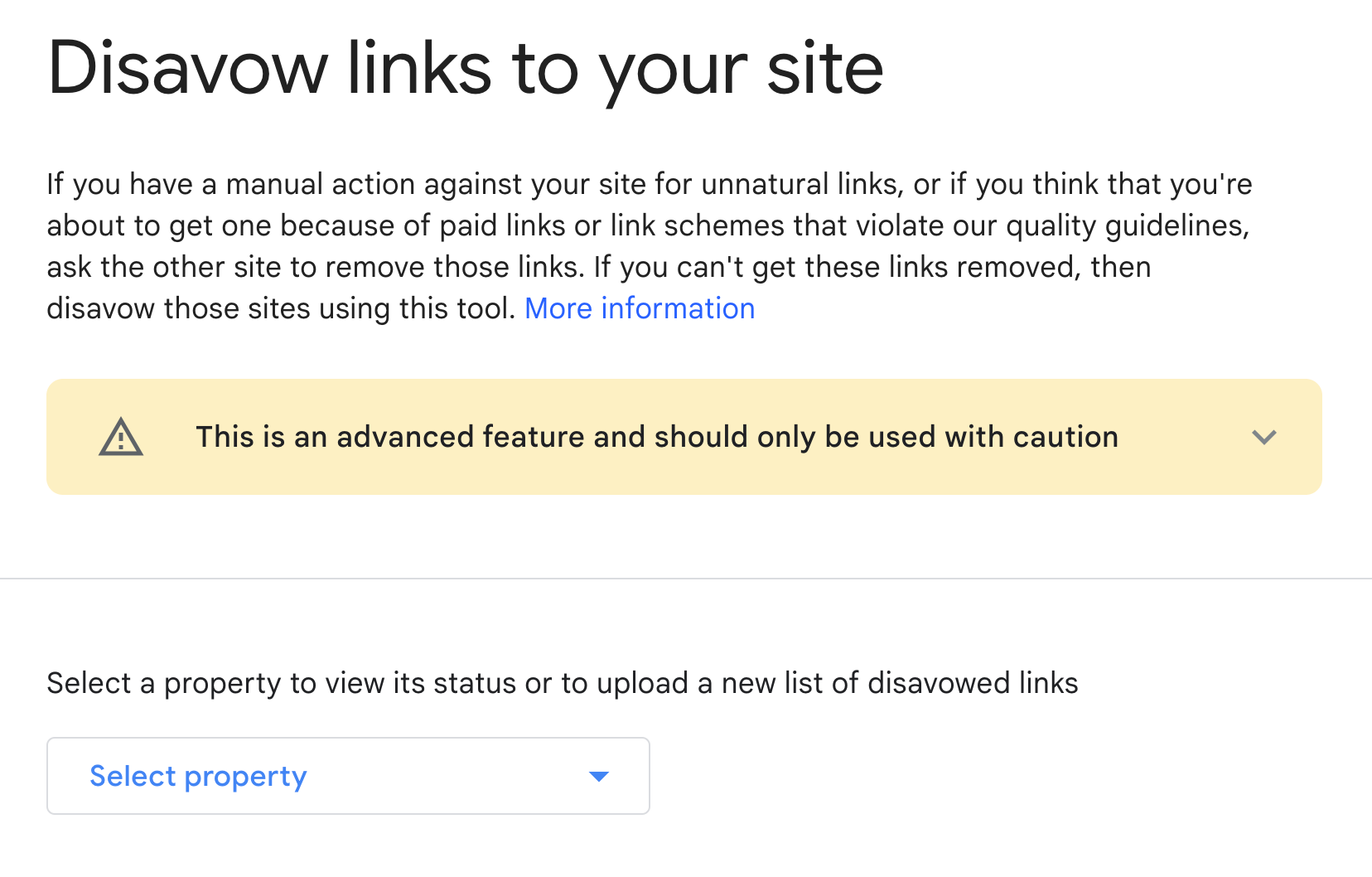Home > SEO Services > Off-Page SEO Audit Services

Off-page SEO Audit
We audit SEO off page to check how other websites interact with yours. This is important to know if your link profile is healthy or if there are links that need to be disavowed.
What is an off page SEO audit?
An off-page SEO audit is a comprehensive evaluation of all the factors outside your website that impact its search engine rankings. While on-page SEO focuses on optimizing elements within your site—like content and keywords—off-page SEO looks at how your site is perceived across the web, primarily through backlinks, social signals, and brand mentions.
Why do you need an off-page SEO audit?
You need an off-page SEO audit to ensure that your website is building authority and credibility in the eyes of search engines. A strong off-page presence, driven by high-quality backlinks and brand recognition, boosts your site’s rankings, attracts more traffic, and enhances its overall online visibility. This audit helps identify weaknesses in your off-page efforts, allowing you to improve your strategies and stay competitive in search engine results.
An off-page SEO audit helps you identify issues with your backlink profile or external reputation, which can be hurting your rankings. By addressing these problems, you can boost your search engine position, making your website more visible to potential customers searching for relevant keywords.
Your website's authority is critical for SEO success. An audit reveals whether you're getting high-quality backlinks from credible sources. Improving your authority through strong external signals builds trust with search engines, which in turn leads to higher rankings and better visibility across the web.
An off-page SEO audit allows you to assess where your competitors stand in terms of backlinks, mentions, and social presence. By analyzing their strengths, you can adjust your strategy to outperform them, capturing more market share and ranking higher for competitive search terms.
A thorough audit improves your external SEO efforts, such as backlink quality and social signals, leading to higher rankings. With better rankings comes more organic traffic. The audit ensures that your external SEO strategies are optimized to drive a consistent flow of targeted visitors to your site.
Tools to conduct backlink analysis:







How to audit your off-page SEO
Auditing your off-page SEO is crucial for understanding how external factors are impacting your website’s search engine rankings. By analyzing your backlink profile, reviewing link quality, and monitoring competitor strategies, you can identify opportunities for improvement and eliminate harmful links. Here’s a detailed 12-step process to conduct a thorough off-page SEO audit.
Step #1: Import Backlink Data
The first step in backlink analysis is gathering comprehensive data on all the links pointing to your site. Tools like Ahrefs, Moz, or Google Search Console provide detailed reports on your backlink profile. These tools reveal the quantity, quality, and diversity of your backlinks. Having a complete list is crucial to identifying which links are beneficial and which may be harmful. This data includes information on the referring domains, anchor text, link placement, and the authority of the linking websites, giving you a clear snapshot of your off-page SEO health.
Step #2: Check Domain Authority of Linking Sites
Once you have your backlink list, the next step is to evaluate the domain authority of the sites linking to you. High-authority domains, like established news outlets or industry leaders, provide strong SEO benefits. Conversely, links from low-authority or spammy sites can harm your rankings. Use tools like Moz’s Domain Authority or Ahrefs’ Domain Rating to check the strength of each linking site. A strong backlink profile should have a balance of high-authority links. If too many links come from low-quality sites, it could indicate a problem that needs to be addressed.
Step #3: Review Anchor Text Distribution
Anchor text is the clickable text in a hyperlink, and its distribution plays a vital role in how search engines interpret your backlink profile. Over-optimization of anchor text with exact-match keywords can trigger search engine penalties, as it appears manipulative. Instead, aim for a natural mix of branded, generic, and long-tail keyword anchors. During the audit, check whether your anchor texts are too focused on a specific keyword or brand. Tools like Ahrefs or SEMrush can help visualize your anchor text distribution, ensuring a healthy, diverse backlink profile.
Step #4: Identify Toxic Backlinks
Toxic backlinks are those that come from spammy, irrelevant, or low-quality sites. They can damage your SEO efforts and even lead to penalties from Google. Identifying these links is essential. Again, tools like Ahrefs or SEMrush can highlight potentially toxic backlinks by analyzing factors like the domain’s authority, link context, and the nature of the site linking to you. Look for patterns, such as links from unrelated industries or sites with a high spam score, to identify which backlinks pose a risk to your search rankings.
Step #5: Use the Disavow Tool
If your audit reveals toxic backlinks, it’s important to disavow them to prevent them from harming your rankings. Google’s Disavow Tool allows you to tell search engines to ignore these harmful links. Create a list of domains or URLs to disavow, and upload it to the Disavow Tool through Google Search Console. While this tool is effective, it should be used carefully. Only disavow links that you are sure are damaging to your site, as removing beneficial links by mistake could negatively impact your SEO.
Google Disavow Tool Photo:

Step #6: Find Lost Backlinks
Lost backlinks can negatively impact your rankings, especially if they come from high-authority sites. The tools allow you to see when and why backlinks were lost—whether it’s due to a page being removed, a site redesign, or a link being replaced. If the link is valuable, you can reach out to the site owner to request a reinstatement or offer new content that encourages them to link to you again, recovering that SEO value.
Step #7: Analyze Competitor Backlinks
Researching competitor backlinks is an essential step in an off-page SEO audit. Ahrefs or Semrush allow you to analyze the backlink profiles of your top competitors. Look at where their backlinks are coming from, the type of content being linked to, and the anchor text used. This analysis reveals valuable link-building opportunities, helping you identify which sites may also be willing to link to your content. SEO competitor research provides insights into what strategies are working for others in your industry, enabling you to improve your own backlink acquisition.
Step #8: Evaluate Link Diversity
A healthy backlink profile includes a diverse range of links from various types of sites — blogs, news outlets, directories, and forums. During your audit, check if your backlinks come from a broad array of sources or if they are concentrated in one category. A lack of diversity can signal manipulative link-building practices and may result in search engine penalties. Focus on this custom SEO approach of acquiring backlinks from various industries, content types, and geographic locations to maintain a natural and robust link profile, which helps build domain authority over time.
Step #9: Review the Linking Page’s Content
The content surrounding your backlinks matters just as much as the link itself. During your analysis, review the pages linking to your site to ensure they are relevant and high-quality. Links from authoritative, contextually relevant pages hold more value in Google’s algorithm. If you find links from low-quality content or irrelevant pages, they may not be helping your SEO and could even be harmful. If necessary, contact the site owner to request link removal or improve your content so that future links come from more relevant, high-quality sources.
Step #10: Calculate a Ratio of DoFollow vs. Nofollow Links
Backlinks come in two forms: dofollow and nofollow. Dofollow links pass on link equity, directly influencing your SEO, while nofollow links do not contribute as much to rankings but can still drive traffic and brand awareness. During your audit, assess the ratio of dofollow to nofollow links. A natural backlink profile should have a mix of both. Too many dofollow links from questionable sources may look suspicious to search engines. Ensuring a balanced ratio helps maintain a credible backlink profile while still benefiting from nofollow links’ indirect SEO value.
Step #11: Monitor Backlink Growth Over Time
Backlink growth should be natural and consistent. Sudden spikes in backlinks, especially from low-quality sites, can signal manipulative link-building tactics and trigger penalties. During your audit, review the timeline of when backlinks were acquired. If you notice any unusual patterns, investigate the sources and quality of these new links. Monitoring backlink acquisition over time ensures that your growth remains organic, which is key to long-term SEO success.
Step #12: Develop a Link-Building Strategy
Based on the findings of your audit, it’s essential to create or refine your link-building strategy. Focus on acquiring high-quality backlinks from reputable sources in your industry. Consider strategies like guest posting, creating shareable content, or reaching out to influencers and partners. If you are trying to drive local SEO traffic to your website, focus on getting backlinks from local directories and local media websites. Competitor research, anchor text distribution, and link diversity should inform your approach. A well-executed link-building plan, combined with continuous monitoring, will ensure your backlink profile strengthens over time, helping you improve search rankings and drive more organic traffic to your site.

We are ready to audit.
- 15-min call
- Audit execution
- Clear report
EXCELLENTTrustindex verifies that the original source of the review is Google. I love the fact these guys are doing handmade SEO, not AI. And this drives results!Trustindex verifies that the original source of the review is Google. We ordered a local SEO audit for our cafe in downtown Chicago. The report is quite informative, so now we know what to do with our Google profile 🙌🏻Trustindex verifies that the original source of the review is Google. Julian, it was very pleasant for you to work with me! You completed my order even faster than I expected!Trustindex verifies that the original source of the review is Google. Gracias a su optimización de SEO local, ahora aparecemos en los primeros resultados de búsqueda locales, lo que ha aumentado el tráfico de clientes a nuestro negocio! 🙏🏻Trustindex verifies that the original source of the review is Google. I'm a small business owner and I've been looking for an affordable SEO offer with a clear plan for a long time. I have a certain marketing background, so I immediately feel the difference when I'm being sold cheap services and when they really show me the expertise and value of the service. I chose Seotwix because they are a local SEO company in Chicago, so they have some experience here and know how the market works. So far, the cooperation has been going very well, and I hope it will continue!Trustindex verifies that the original source of the review is Google. They are managing my Google profile for 2 months. We’ve set up the goal to be in the top three in one of Chicago suburbs. I feel positive results in calls amount, but there is still a lot of local seo work to be done.Trustindex verifies that the original source of the review is Google. I hired them for website redesign. To be honest they are not great designers, but their experience in SEO optimization is priceless. Website looks clean and pretty simple, but rankings go up, so i don’t know how it works, but this is definitely much better than just a fancy website with 0 visitors =)) 5 out of 5!Trustindex verifies that the original source of the review is Google. Зробили гарний вебсайт! Рекомендую!Trustindex verifies that the original source of the review is Google. This is exactly the kind of realistic approach I needed for the SEO Chicago market. After working with large, impersonal marketing agencies, it's refreshing to have someone like Yulian who's available every day to communicate and brainstorm new ideas for my website. He truly makes you feel like you and your business are a priority, not just another account.Trustindex verifies that the original source of the review is Google. Nice work guys !!!Verified by TrustindexTrustindex verified badge is the Universal Symbol of Trust. Only the greatest companies can get the verified badge who has a review score above 4.5, based on customer reviews over the past 12 months. Read more
FAQ
Looking to learn more about off-page SEO audit? Browse our FAQs:
What are toxic backlinks and how do they affect my site?
They come from spam or a poor or unrelated website. These links are also bad for your search engine status as the search engines are being told that your site may be associated with suspicious or low quality SEO. As such, backlink toxicity is a crucial parameter that must be identified and eradicated to prevent search engines such as Google from blacklisting the website.
How can I improve my backlink profile?
There are several strategies that one has to embark on in order to achieve the best results in the backlinks;
- Earn high-quality backlinks: The best kind of linking should be focused on getting links from those relevant sites in your special niche.
- Guest posting: Publish articles or blog posts on other related sites that will link back to your site.
- Convert unlinked brand mentions: Locate where you find a link to your brand without a hyperlink and then visit the owner, asking him to link back to your site.
- Give up toxic backlinks: It is advocated that periodically to ensure that there is a right backlink profile, any unbeneficial backlinks should be revisited and then neglected.
What are the different types of links?
There are three main types of links:
- Do-follow Links: These are normal HTML links which the search engines use to crawl and index a particular site. They transfer link power from one site to another to benefit in increasing the search engine ranking positions.
- No-follow Links: The following links inform the search engines not to pass any link juice to the linked site. They do not affect the searched ranks; however, they can affect the traffic levels dependently. Again it is important to note that majority of links originating from social media sites are no-follow links.
- Sponsored Links: They are paid links whereby they should be marked as advertisements to fulfill the search engine necessities. Link equity, which is a way for a website to pass its Juice to another website, is not passed by them.
Although do-follow links are great for SEO, no-follow link can still bring traffic which is considered to be referral.
Is off-page SEO still effective for SEO?
Yes, off-page SEO is still very effective. It includes activities like building links from other websites, social media engagement, and getting your brand mentioned on different platforms. These actions help improve your site’s reputation and visibility, which are key factors that search engines consider when ranking your site.
How often should you do an off-page SEO audit?
We recommend doing an off-page SEO audit at least once every three or six months. This helps you keep track of how your site is performing in terms of external links and social media presence. If you’re actively trying to improve your SEO or notice major changes in your rankings, you might want to do these audits more frequently, like every three months. To build this process, you can consider our custom SEO packages where we analyze your backlink profile every month.
What tools are used for an off-page SEO audit?
Various tools are used during the off-page SEO audit as they include:
- Ahrefs: Provides information about link back report, competitors’ analysis, and link building.
- SEMrush: Helps in back link research, competitor analysis and monitoring of mentions of brand and shares on social media platforms.
- Moz: Combined with other analysis tools, it can be used for monitoring of the links and for the possible backlinks visualization.
These tools are helpful in obtaining Info and Information that are important in the improvement of your off-page SEO plan.